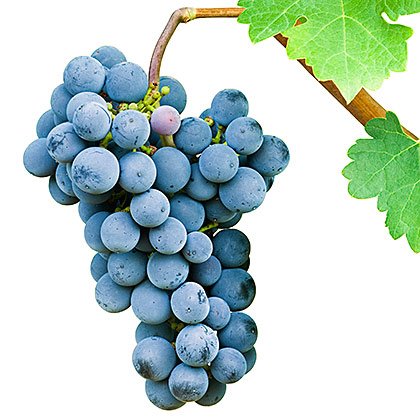
Next time you pour a glass of wine, raise a toast to the 30-million-year-old viruses that have contributed to the genetic make-up of modern grapes.
A team of UQ-led plant scientists has discovered that the Pinot Noir grape variety owes a significant part of its genetic heritage to ancient plant viruses.
In a study published in Nature Communications, Dr Andrew Geering and colleagues have mapped the presence of 30-million-year-old viruses in Pinot Noir DNA.
Viruses are usually a curse to farmers because of the damage they cause to crops, but this study also suggests they play a vital evolutionary role.
Dr Geering, a plant pathologist at the UQ’s Queensland Alliance for Agriculture and Food Innovation, said most flowering plant species, even the most primitive ones, contain sequence signatures of viruses in their genetic material.
“Animals can move to avoid threats but because plants are anchored to the ground they are obliged to adapt to environmental pressures, such as those brought about by drought or grazing, using novel strategies.
“Plants cope with such threats by acquiring new biochemical pathways or growth habits.”
“Pulling new genetic material from the environment, such as from viruses that infect the plant, means evolution can be sped up considerably.”
Much like humans, plants are regularly exposed to harmful chemicals or radiation, which can cause damaging and heritable mutations to their genes which, if left unrepaired, could be lethal to their descendants.
“Fortunately, there are special mechanisms to repair these mutations. It’s during this repair procedure that foreign DNA such as that originating from viruses can be inserted into the plant’s own genetic code, much like using putty to fill a crack in the wall.”
“When this happens, the viral DNA can become ‘domesticated’ if it provides a selective advantage to the plant.”
Dr Geering said his team’s research added to the ongoing global debate on genetic engineering.
“Scientists today are using modern techniques to insert virus sequences into plants as a kind of vaccination against future infections.”
“It appears this has been happening naturally in plants for millions of years.
“Often what is being done in laboratories around the world is just mimicking a natural process.”
Integrated (or endogenous) viruses are of great scientific interest for another very different reason, as they are essentially molecular fossils of viruses that existed more than 30 million years ago.
Normally viruses break down soon after their host dies, so it is rare to be able to get a picture of what ancient viruses looked like and where they came from.
“Like fossils captured in the strata of rocks, it’s possible to observe the succession of evolution events leading to modern day plant viruses,” Dr Geering said.
“Some of the evolutionary attempts appear to be ‘dead-end’, as modern counterparts no longer exist.”
Research paper: ‘Endogenous forendoviruses are major components of plant genomes and hallmarks of virus evolution’, Nature Communications, MacMillan Publishers Ltd.
About QAAFI
The Queensland Alliance for Agriculture and Food Innovation is a UQ research institute which was formed as a strategic alliance between The University of Queensland and the Queensland Government. QAAFI brings together scientists from across the plant, animal and food sciences, working closely with the Department of Agriculture, Fisheries and Forestry.
Media: Dr Andrew Geering, +61 7 3255 4389 (mobile 0407 035 941), a.geering@uq.edu.au, or Margaret Puls, QAAFI Communications, +61 7 3346 0553, m.puls@uq.edu.au.









